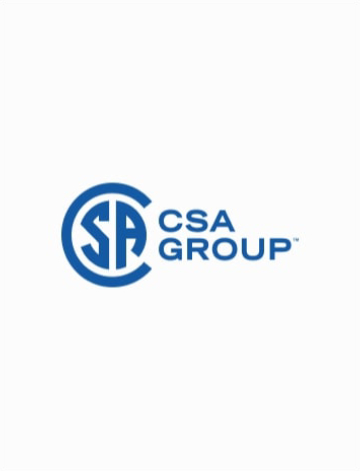Preface
This is the second edition of CSA Z460, Control of hazardous energy - Lockout and other methods. It supersedes the identically titled first edition published in 2005. This Standard specifies requirements for and provides guidance on
a) the responsibilities of the principal parties involved in hazardous energy control (Clause 4);
b) the design issues that influence the effective application of control methodology (Clause 5);
c) task and hazard identification procedures (Clause 6);
d) the hazardous energy control program elements necessary for protection of authorized and affected individuals (Clause 7.3);
e) special applications where traditional methods of hazardous energy control are inappropriate or impractical (Clause 7.3.10);
f) development of other methods for tasks that are integral to the production process, including tasks where traditional lockout prohibits completion (Clause 7.4);
g) communication and training (Clause 7.5); and
h) management review to ensure the effective functioning of the hazardous energy control process (Clause 7.6).
This Standard provides for flexibility in hazardous energy control methodology decisions as part of an occupational health and safety management system (see CSA Z1000). Other methods are based on risk assessment and application of the classic hazard control hierarchy (see Clause 7.4.4). However, lockout is emphasized as the primary approach to hazardous energy control.
In the creation of this second edition, the following specified changes have been incorporated:
a) the Scope has been expanded to include mobile mechanical equipment and freeze-plug applications.
b) definitions for the following terms have been added or revised:
i) Affected individual;
ii) Affected individual;
iii) Risk assessment;
iv) Risk reduction;
v) Zero energy state; and
vi) Zero energy state control.
c) Clause 6.1 - added a reference to CSA Z1002.
d) Clause 7.1.1.1 - revised to better clarify users' responsibilities when it is impracticable to upgrade non-compliant machine, equipment of processes.
e) Clauses 7.3.2.1 to 7.3.2.2.3 - revised to clarify specifically who can perform energy isolations and lockout, as well as to clarify what must be done when energy isolation devices are not capable of being locked out.
f) Clauses 7.5.2.2 to 7.5.2.5 - revised to clarify new training expectations.
g) Clause 7.6.2.1 - revised to identify new minimum training frequency requirements.
By permission of the American National Standards Institute (ANSI), this Standard is based in part on ANSI/ASSE Z244.1-2003, Control of Hazardous Energy - Lockout/Tagout and Alternative Methods. By permission of International Organization for Standardization (ISO) TC 199, Annexes A and B are based in part on ISO 12100:2010, Safety machinery - General principles for design - Risk assessment and risk reduction.
In this 2013 edition, where a significant change or addition to the previous edition of this Standard has been made, the clause, table, or figure affected is identified by the symbol delta (Δ) in the margin. Users of this Standard are advised that the change markers in the text are not intended to be all-inclusive and are provided as a convenience only; such markers cannot constitute a comprehensive guide to the revisions made to this Standard. Care must therefore be taken not to rely on the change markers to determine the current requirements of this Standard. As always, users of this Standard must consider the entire Standard.
This Standard was prepared by the Technical Committee on Hazardous Energy Control, under the jurisdiction of the Strategic Steering Committee on Occupational Health and Safety, and has been formally approved by the Technical Committee.
Scope
1.1 Scope
This Standard specifies requirements for controlling hazardous energy associated with potentially harmful machines, equipment, and processes (including mobile machinery and equipment - see Annex L).Where a CSA Standard or other recognized Standard exists for a specific type of machinery, equipment, or process, it should be used with this Standard to provide the most effective protection.
1.2 Purpose
The purpose of this Standard is to specify requirements and performance objectives for procedures, techniques, designs, and methods to protect personnel from injury from the inadvertent release of hazardous energy. Release of hazardous energy can include any motion, energization, start-up, or release of stored energy that, from the perspective of the person(s) at risk, is either unintended or deliberate.
Lockout is recognized as the primary method of hazardous energy control. When the tasks specified in Clause 1.3 are integral to the production process (see Clause 7.4.2), or traditional lockout prohibits completion of those tasks, other methods of control that provide effective personal protection are used. These other methods are based on risk assessment (see Clause 7.4.3).
1.3 Application
This Standard applies to, but is not limited to, activities such as: erecting, installing, constructing, repairing, adjusting, inspecting, unjamming, setting up, troubleshooting, testing, cleaning, dismantling, servicing, and maintaining machines, equipment, or processes.
Safeguarding of machines and the control of energy supply systems during normal production activities are addressed in CSA Z432, CSA Z462, and other machine- and system-specific Standards.
Special considerations for work in confined spaces are addressed in CSA Z1006.
1.4 Exclusions
This Standard does not specify safety procedures for manually operated machines or equipment where the only source of energy is the individual operator himself/herself.
1.5 Terminology
In CSA Standards, shall is used to express a requirement, i.e., a provision that the user is obliged to satisfy in order to comply with the standard; should is used to express a recommendation or that which is advised but not required; may is used to express an option or that which is permissible within the limits of the standard; and can is used to express possibility or capability. Notes accompanying clauses do not include requirements or alternative requirements; the purpose of a note accompanying a clause is to separate from the text explanatory or informative material. Notes to tables and figures are considered part of the table or figure and may be written as requirements. Annexes are designated normative (mandatory) or informative (non-mandatory) to define their application.


